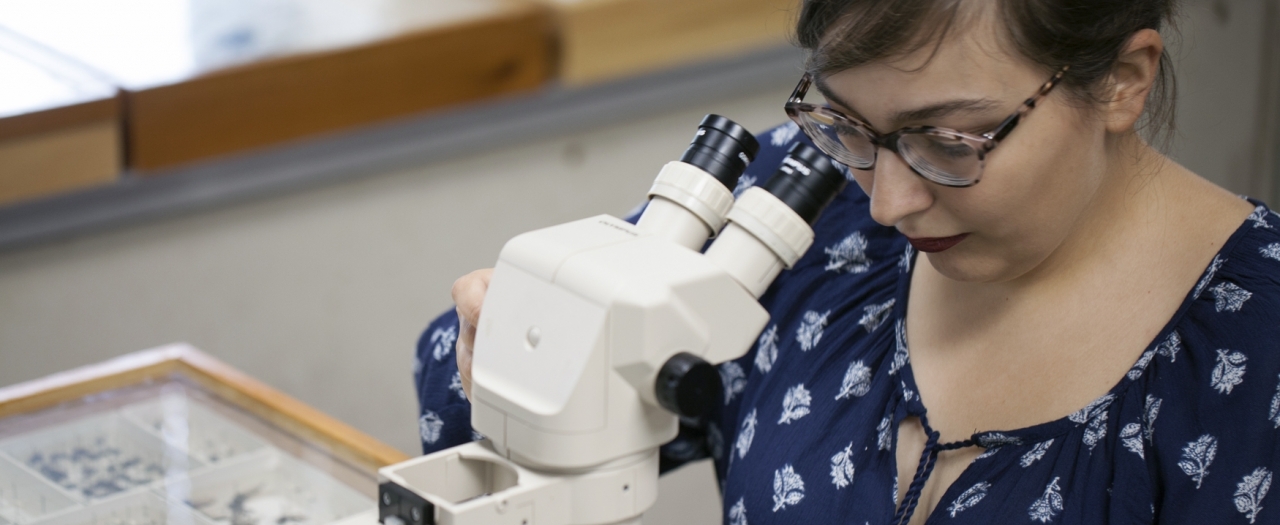It is estimated that 1 percent of the world’s fly species, or approximately 1,500, are found on the tiny island nation of Madagascar, off the southeast coast of Africa.
Natalia Maass has found a new one to add to that list.
Now a graduate student at Eastern Kentucky University pursuing a master’s degree in biology, Maass performed her research while an undergraduate student at the University of Scranton and summer intern at the North Carolina Museum of Natural Science and Nature Research Center in Raleigh.
Maass, who grew up on Long Island in New York, began working for the North Carolina facility in the summer of 2013 and was given the opportunity to identify vials of bee flies that had been collected from Madagascar.
“One has to take into consideration that (Madagascar) flies are poorly known,” Maass noted, “so with that in mind, going through the bee flies collected in Madagascar, there was a good chance I would find a new species. In fact, there’s probably a good chance many of the flies I looked at were all new species.”
However, as Maass pointed out, a new species can only be declared as such after they have been compared to other known described species of that genus. Many of the bee flies she investigated were in genera that had been described in a foreign language in the late 19th or early 20th century, so acquiring the species descriptions was difficult at best.
“For Thevenetimyia spinosavus, I lucked out. I was going through a vial of these bigger flies that I know I couldn’t get species description when I saw him, with the help of a microscope. He was tiny, just clocking in a whopping 6 millimeters. But I knew when I saw him, he was special. The only other genus of Thevenetimyia in Africa is found on the continent, farther north and far from Madagascar. We were able to get ahold of the species description of the other African Thevenetimyia, and they were completely unlike. This meant we had a new species on our hands and could go forth formally describing it.
“The genus Thevenetimyia is made up of small- to medium-sized, darkly-colored flies with smoky brown wings. The species name we chose, spinosavus, translates into ‘thorny grandfather’ from Latin. The thorny part refers to these little spines that are present on the fly’s back, and the ‘grandfather’ part refers to its ‘elderly’ appearance. It is covered in a lot of white and gray hairs.”
The research was submitted to the Zootaxa journal this fall and recently accepted. The Zootaxa article can be read at http://biotaxa.org/Zootaxa/article/view/zootaxa.4175.1.5.
For Maass, “the coolest part of finding a new species is the fact that we’re still finding new species. The fact that there are still animals out there that no one has seen before or overlooked is amazing, and has to make you think how many more are out there waiting to be discovered.”
Maass, studying under Foundation Professor Dr. Gary Ritchison, expects to earn her master’s degree from EKU in May 17 and begin looking for jobs related to bird and insect research. Her longer-range goal is to earn a Ph.D. degree and pursue a career as a museum curator.
